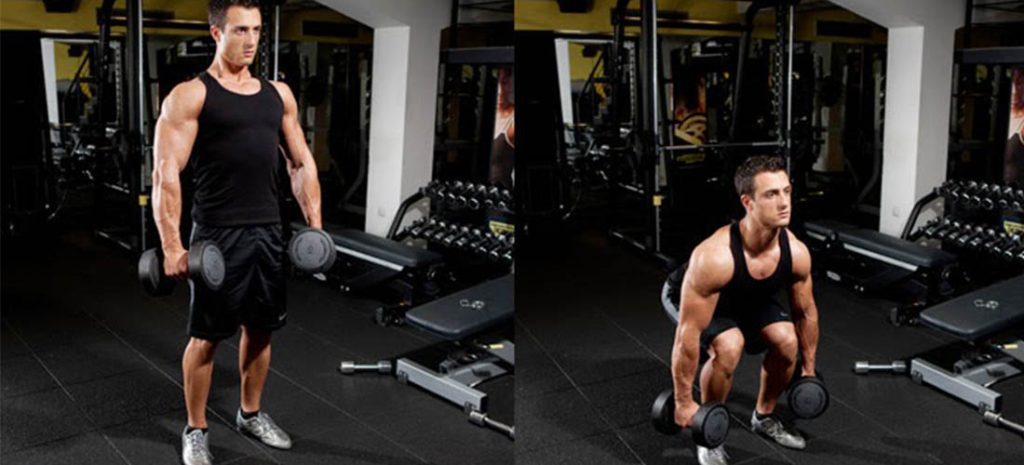The dumbbell deadlift is a spin on the traditional deadlift, where an athlete simultaneously picks up two heavy dumbbells resting on either side.
Though both exercises are essentially lifting heavy weights off the floor, there are a few key differences to keep in mind.
In this article, we’ll break down everything you need to know about the dumbbell deadlift. Learn how to do it, where to add it into your CrossFit training and when you might use it over a barbell deadlift at the gym.
What is a Dumbbell Deadlift?
A dumbbell deadlift is a spin on the deadlift, one of nine foundational movements in CrossFit.
Instead of loading up a barbell with heavy weights, the dumbbell deadlift is performed with two dumbbells on either side of the body.
The implements are different but the form is the same. If you know how to deadlift already, you can likely start doing dumbbell deadlifts right away.
How Effective is the Dumbbell Deadlift?
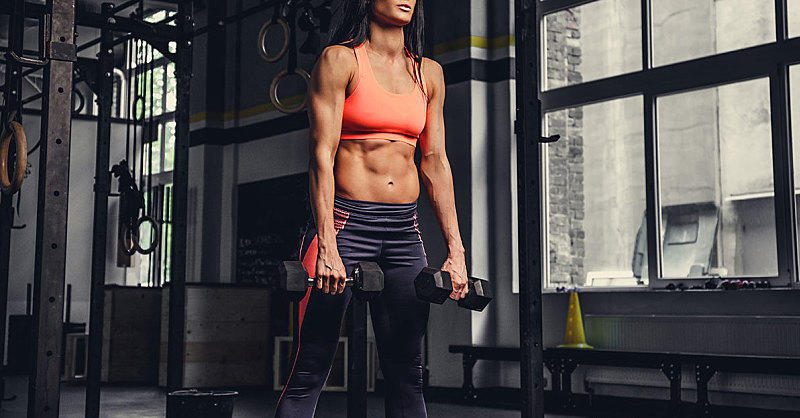
Depending on your goals, the dumbbell deadlift might actually be more effective for training than a barbell or kettlebell deadlift. For instance, and depending on weaknesses, dumbbells can help improve grip strength.
Dumbbell Deadlift For CrossFit
You will occasionally see the dumbbell deadlift programmed into CrossFit workouts. The 2018 CrossFit Open began the love affair that CrossFit has with all things dumbbell-related.
Because many strong athletes won’t have access to dumbbells heavy enough to test their one rep max, dumbbell deadlifts are most likely to be found in metcons, EMOM workouts, or longer workouts like Hero WODs.
Dumbbell Deadlift vs Barbell Deadlift
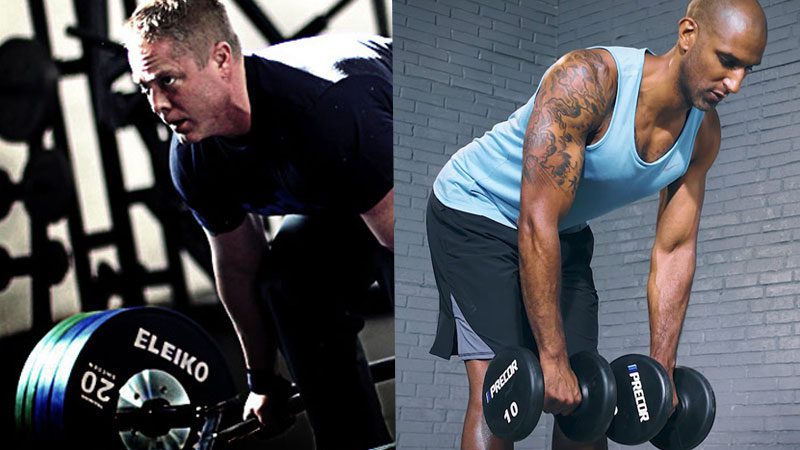
The barbell deadlift is considered by many to be the ‘desert island’ strength training exercise–the exercise you’d pick if you were trapped on a desert island and could only do one exercise for the rest of your life.
Along with the back squat, it is considered one of the kings of strength training exercises.
If it’s so effective, why dumbbell deadlift? Here are a few times the dumbbell deadlift might be the better choice:
Conditioning and Higher Rep Schemes
Obviously, you can also use deadlifts for conditioning. But anyone that’s done fifty plus deadlifts in a WOD knows what that feels like the next day. If you want to program deadlifts into a workout without destroying your back, dumbbell deadlifts are a great sub.
Recovering From Injury
If you tweak your back and can’t deadlift heavy for a while, dumbbell deadlifts are a good substitute exercise for WODs. You also might use them to keep your back strong as you work towards heavier weights.
Grip Training
A correct dumbbell deadlift travels up the side of your body, not the front. This is a good way to change up how you train your grip strength. For a real grip challenge, wrap the dumbbells with towels to make them larger.
Dumbbell Deadlift vs Dumbbell Squats
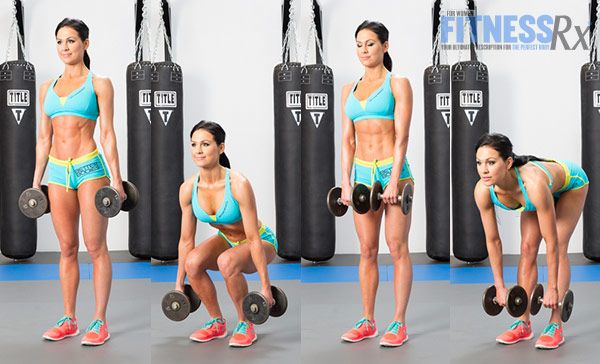
Both dumbbell squats and dumbbell deadlifts are compound exercises that strengthen a lot of different muscle groups.
Deadlifts are going to train your back and hamstrings while squats will train your quads. Both exercises train your glutes and core–and quite frankly, a lot of other things, too.
Read the benefits of dumbbell deadlift above. The same tips apply for subbing dumbbell squats for a back or front squat.
Dumbbell Deadlift Benefits
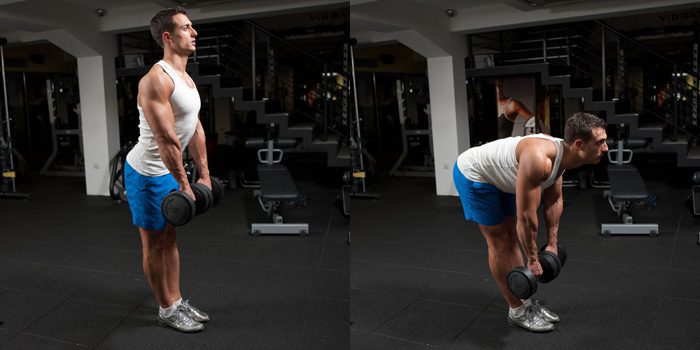
Here are some of the training benefits of adding dumbbell deadlifts to your training:
- Coordination- Anytime you force your body to pick up two objects simultaneously, you are training coordination.
- Strength training– Full body compound movements make us stronger. Though you likely won’t set a one rep max with dumbbells, you can keep the reps low (3-5 per set) and easily develop strength with this exercise.
- Muscle hypertrophy– Hypertrophy, or muscle growth, is possible in the forearms, legs, and back from doing dumbbell deadlifts. Perform medium to higher reps if this is your goal.
- Hotel Room WOD-Approved– If you travel a lot or need to pull a workout out of your pocket with minimal equipment, the dumbbell deadlift is an easy exercise to plug in. Combine medium to high rep dumbbell deadlifts with something that will get you breathing like burpees or rowing.
How Do I Do A Dumbbell Deadlift?
The key to a good dumbbell deadlift is in the setup. It’s also important to maintain form throughout.
Begin by placing the dumbbells in line with one another, slightly wider than shoulder width apart. This allows you to slip your feet into the proper position so you can set up.
Don’t let the dumbbells start out in front of your shins.
Next, place your hands on the dumbbells. Here are two things to focus on during the setup.
- Find the floor through your heels so you aren’t sitting forward on your toes.
- Maintain a straight back and tension in your upper body (cue: “proud chest”)
As you drive through the floor with your weight in the heels, hold that tight back position. Take the dumbbells all the way to a standing lockout, just like you would with a regular deadlift.
Squeeze your glutes at the top of the lift to ensure you don’t stop short of full range of motion.
How Do You Do Sumo Deadlifts with Dumbbells?
lift and dumbbell deadlift–your foot position and the way you hold the dumbbell.
Instead of placing your feet inside of the dumbbells, they will be outside. The dumbbell will sit vertically. One dumbbell is picked up with two hands.
Line the bell up so it is halfway between your feet. Step your feet 1-2 feet outside of the bell on either side (taller people need a wider stance).
Your feet should be in line with the dumbbell and you should be standing over them when you set up. Follow the same cues for maintaining good form as above.
Remember that when it comes to picking weights up off the floor, the closer the weight is to your body, the better.
What Muscles are Worked Doing a Dumbbell Deadlift?
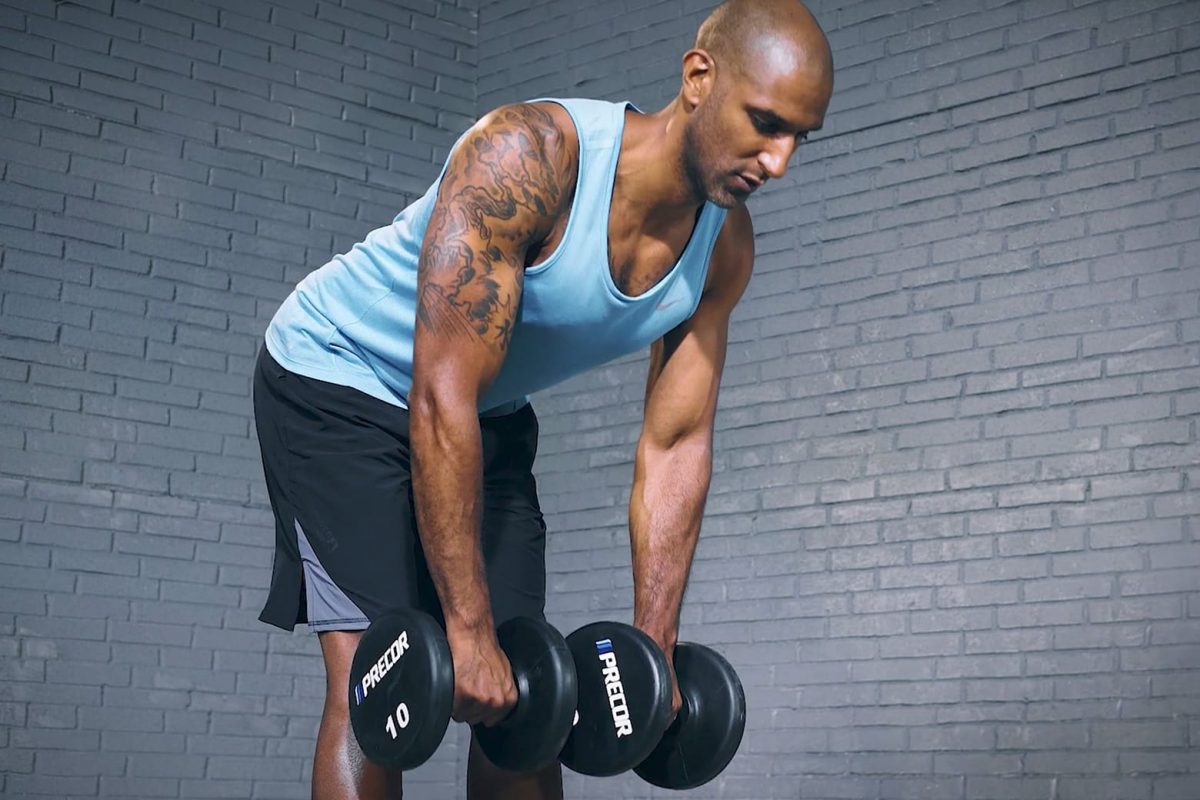
The dumbbell deadlift is a compound exercise, meaning that your whole body must work together to accomplish the lift. There are a few muscle groups it works in particular.
Here they are:
- Hamstrings- Even with lighter weights, there should always be tension in your hamstrings as you rep out dumbbell deadlifts. This is the key to good form–as well as feedback that you are driving through your heels while doing the exercise.
- Lower/upper back– Your back should never round during dumbbell deadlifts. Holding this straight back position will develop all the big muscle groups in your lower and upper back.
- Grip- If you’ve ever done heavy farmer’s carries before, you know that dumbbells improve your forearm strength in ways that a barbell cannot. High rep dumbbell deadlifts are a great way to develop your grip.
- Glutes- Any strength coach will tell you that hitting big lifts requires strong glutes. If you’re quad dominant (you probably are), dumbbell deadlifts are a good time to work on glute strength. Squeeze your glutes at the top to finish the rep.
- Quads- Any kind of deadlift or squat is going to strengthen your quads, which is good for any type of functional exercise.
Dumbbell Deadlift Variations
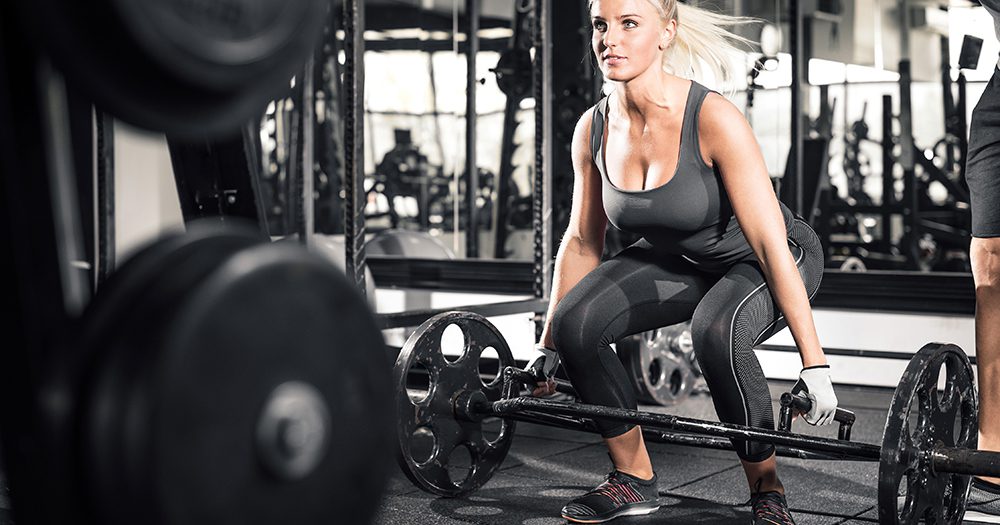
Here are a few variations or alternatives to the dumbbell deadlift that you might find in CrossFit.
Dumbbell Sumo Deadlift High Pull
Occasionally you will see the dumbbell SDHP come up in a WOD. Use the same setup cues listed in this guide. If you’ve never done this exercise before, the key to it is in the hip drive (think explosive hips on each rep).
This way, the dumbbells will travel the required distance without you having to ‘muscle’ them to a lock out.
Dumbbell Hang Clean
Cleans and deadlifts obviously are different exercises, but you will often see dumbbell deadlifts and things like hang cleans programmed into the same workout because they are easy to transition between.
Workouts like DT attest to this. You might also see complexes or things like dumbbell man makers come up using one or both of these exercises.
Conclusion
While you probably won’t set a lifetime PR with the dumbbell deadlift, it is a great exercise for developing strength and coordination.
It’s also a versatile exercise that can be plugged into workouts when you find yourself low on equipment.
Form is key with anything deadlift-related. Review the technique section and really dial that down before you start cranking these out during workouts.

